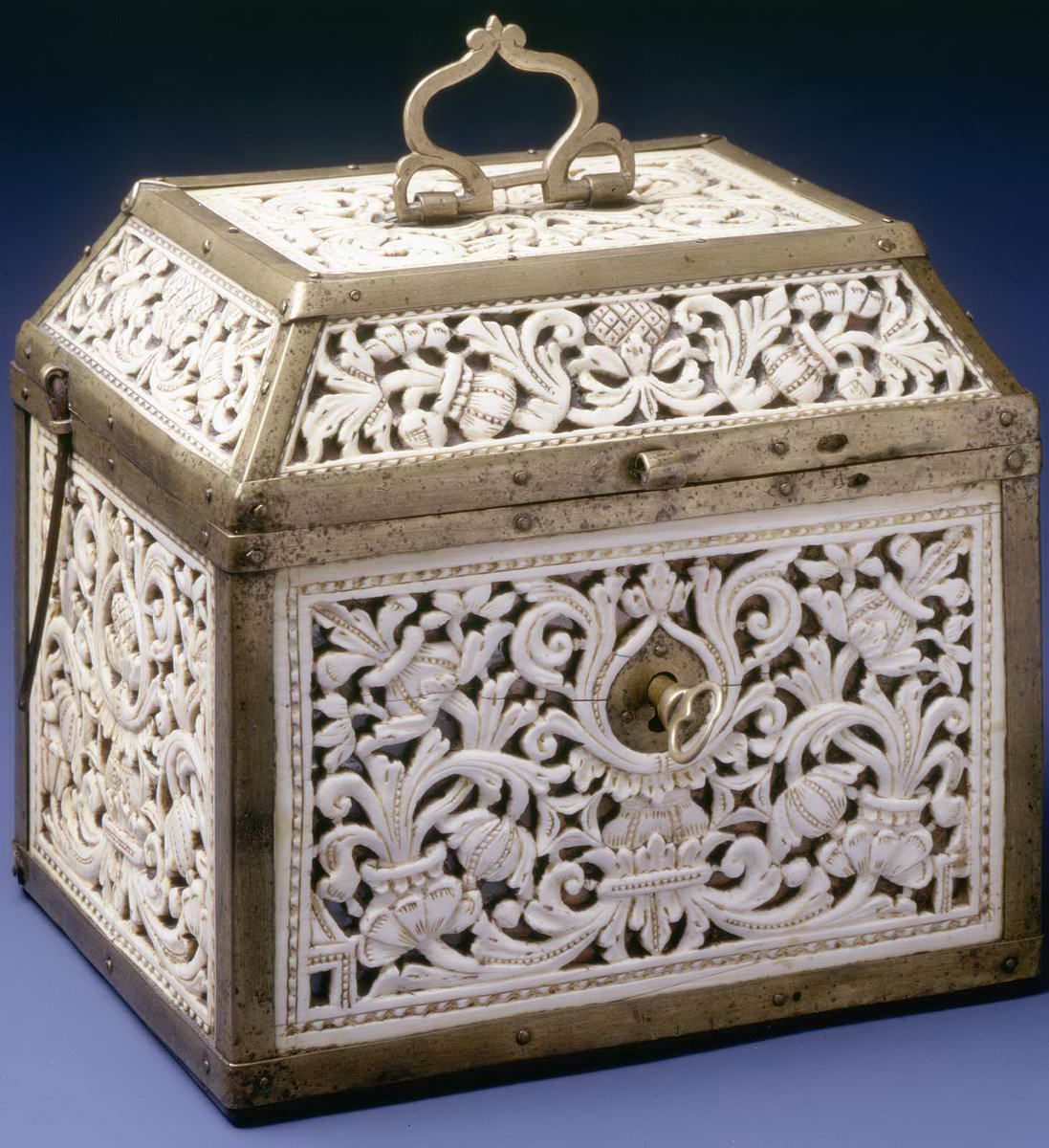


Форма ларца-«теремка», напоминающего домик со скошенными краями крыши, характерна для русской утвари XVII–XVIII веков и встречается не только в резьбе по кости и дереву, но и в кованом железе. Пышное травное узорочье, характерное для стиля искусства эпохи, украшает ларец ажурной резьбой.
Деревни на Курострове близ Холмогор Архангельской губернии уже в XVI веке были известным костерезным промыслом. Добыча моржовых клыков составляла исконный промысел поморов и жителей северных рек Пинеги, Мезени, Печоры. Зверя били у острова Вайгач и у берегов Новой Земли. В тундре добывали ископаемую кость — «голубую», то есть бивни мамонтов, ценившиеся наравне с клыками моржей. Но более простые предметы холмогорцы резали из так называемой «цевки» – кости домашних животных. Самые ранние сохранившиеся произведения холмогорских резчиков в собрании ГРМ относятся к концу XVII века. Пышное травное узорочье характерно для предметов из кости, как и для всего стиля искусства этой эпохи.

The “terem” form of the casket, reminiscent of a house with sloped edges of the roof, is a characteristic of Russian utensils of the 17th-18th centuries and is found not only in bone and wood carving, but also in wrought iron. A lush herbal ornament, which is the style characteristic of the art of the epoch, adorns the casket with openwork carvings.
The villages on Kurostrov near Kholmogory of the Arkhangelsk province were known for the bone carving craft as early as in the 16th century. The production of walrus tusks was the original craft of the Pomors and the inhabitants of the northern rivers of Pinega, Mezen, Pechora. The beast was beaten near Vaygach Island and off the coast of Novaya Zemlya. In the tundra people obtained a "blue" fossil bone that is the tusk of mammoths, valued along with the fangs of walruses. But more simple items craftsmen cut from the bones of domesticated animals. The earliest works of Kholmogory carvers are preserved in the collection of the State Russian Museum and date back to the end of the 17th century. The lush herbal pattern is characteristic for bone objects, as well as for the whole style of art of this era.



